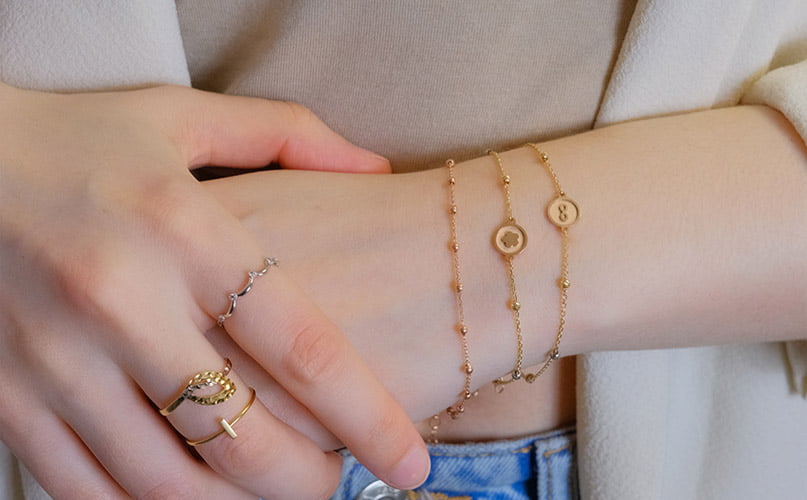Pink gold is a mixture of gold, copper, and silver. Pure gold is too soft to be practical for most purposes. To make pure gold stronger, it's mixed with other metals with pure gold. Almost anything called "gold" is not actually pure and maybe an alloy, i.e., vermeil or plated. Gold is alloyed with many other metals, but few have the same distinctive physical properties and colour as pink gold.
Pink gold is made from mixing gold with copper and silver. Copper gives it a red hue, and silver makes it lighter. Pink gold isn't very common, but rose gold is more popular than pink gold. Rose gold is much preferred in the fine jewellery market. Rose gold is popular in contemporary jewellery, such as jewellery for necklaces and engagement rings.
What is the Difference Between Pink gold, Red, and Rose gold?
The term pink gold is not a precise one; it can be used to describe any alloy/material of this type. Generally speaking, though, the ratio of 75% solid gold, 20% copper, and 5% silver is considered pink.
There are many different shades of gold. These colours range from pink to red and everything in between. The names for these types often get mixed up because they share a similar colour hue - but there is one key difference: the copper content varies significantly among each type.
Red gold contains more copper (50% or 75%) than any other variation, giving it a deeper hue when compared with rose or pink gold, which contains less silver and has more proportions of copper.
Gold jewellery is a pure, precious metal that will not rust or tarnish, while copper is an ordinary metal that can tarnish and corrode. Diluting gold purity makes pink gold lose some of its properties but still requires minimal care. However, with age, even well-cared-for pink gold will become slightly darker. To keep your pink jewellery clean, wash it off in soapy water, then wipe it down gently using a soft cloth.
As your jewellery ages from wear-and-tear over time, people may start to acquire an attractive patina that many people prefer because they think it makes their jewellery more antique looking rather than brand new shiny pieces- this is a form of oxidation that makes the gold appear darker and less pure.

The Value of Pink Gold
Gold is measured in carats; it determines how much gold there is in the piece of jewellery. The more pure/solid gold, the higher the number of carats. For example, 24 carat is pure/solid gold. Pink and Rose gold are 18 carats. Gold with 25% copper in it is 18 carat gold too because they are both red metals, but one has more copper than the other.
The Value of Pink Gold
Rose Gold, Pink Gold, or Red Gold is not pure gold as mentioned above; pure gold is measured in 24carats, 18-carat gold jewellery is made from
18 parts (75%) pure gold and six parts (25%) of other alloys in this case:
18ct Red Gold | 75% solid gold | 25% copper | 0% 925 silver
18ct Rose Gold | 75% solid gold | 22.2% copper | 2.8% 925 silver
18ct Pink Gold | 75% solid gold | 20% copper | 5% 925 silver
People typically have a different understanding of what solid gold is. Gold can be valued in the form of jewellery, but it's important to remember that even if a piece of gold fine jewellery is 9 carats or 18 carats, you are still talking about the percentage of pure gold, the percentage used to make a rose gold jewellery like stud earrings, necklace or women chain. The higher the purity level of gold, the better the jewellery will be.


